Civil War Facts
Chapter 3
1861-1865
Contents
1803-1860
Signals of Impending War
Triumvirate
Political Currents
Insurrection
Lincoln
1863 Battles
1864 Battles
1865 Battles
Chapter 3
Civil War Facts
Consequences of the War
Death
Destruction
Union
Documenting Consequences of the War
Death
"A Sight in Camp"
Walt Whitman
Over each the blanket spread, ample brownish woolen blanket,
Gray and heavy blanket, folding, covering all.
Curious I halt and silent stand,
Then with light fingers I from the face of the nearest the
first just lift the blanket;
Who are you elderly man so gaunt and grim, with well-gray’d hair,
and flesh all sunken about the eyes?
Who are you my dear comrade?
Then to the second I step—and who are you my child and darling?
Who are you sweet boy with cheeks yet blooming?
Then to the third-a face nor child nor old, very calm, as of beautiful yellow ; -white ivory.
Young man I think I know you—I think this face is the face of the Christ himself,
Dead and divine and brother of all, and here again he lies.
Civil War Facts
Prior to the war, both north and south believed that the war would be won by their side quickly and decisively.
The South had their proud military tradition to back their rosy view, and the North had population and industrial advantage to bolster their perspective.
Bull Run, the first major battle of the war (July 21, 1861), instantly shred their optimistic perceptions. Sixty thousand men engaged in the first modern war of the century. The carnage was dramatic. Bodies were strewn across the fields. A twelve hour battle produced 3,000 casualties on the doorstep of the nation's capital.
The Union Army, at the start of hostilities, had less than 100 surgeons on active duty to treat the affects of the havoc.
The Mathew Brady's Manhattan studio photographers spread out over the battlefields and took photos of the dead. The new technology starkly portrayed the scenes and horrified northerners. This stimulated civilian action to fill a void unfilled by the federal government: care of the wounded and the dead.
Civil War Facts
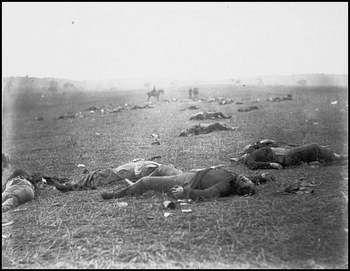
Gettysburg
North and South had made no provisions for handling of dead and wounded. Medical doctors responses were, at best, ad hoc.Each side had learned how to increase the kill rate, but failed to provide a policy for the battle's aftermath. Dilutions of morphine were used uniformly for pain. Amputations were common place with little attempted to save a limb and with as much as an 80% mortality rate. The New York Times writer Brian Craig Miller best described the plight of the amputee:
"Disabled men relied on their spouses and families to assist them in dealing with the everyday physical and emotional rigors of life. Damaged veterans also remained dependent on society’s willingness to concede that amputation and the altering of the white male body had shattered traditional gender roles, as injured men no longer appeared or functioned as they had before the war. Amputees were also dependent on government programs, whether at the federal level for Union veterans or the state level for Confederate veterans, for prosthetic limbs and pension payments".
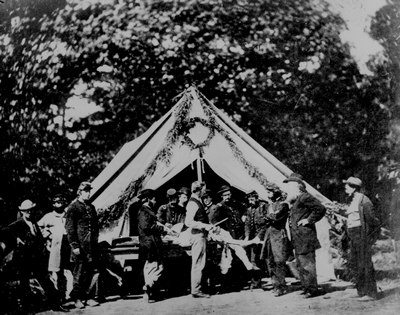
Amputation al fresco
National Archives
Before the war, there had been guiding religious practices that viewed death as an extension of life. Bodies were treated with respect. The death bed was an opportunity for loved ones to make their last wishes known to a loving family. Salvation was at hand and a resting place in a family graveyard. A century of ingrained beliefs and religious traditions were now irrelevant in this war.
Disposition of bodies by opposing forces, when sometimes ordered, merely accentuated the hatred between the living soldiers. Enemy bodies were tossed into wells, rivers, ravines, mass shallow graves or burned. The stench on the fields was overpowering. Later,in 1863,the residents of the town of Gettysburg, were subjected to the odor of rot for several months.
In 1861, as each battle produced rotting corpses by the thousands, death from relatively moderate wounds, death by disease (typhoid fever and dysentery were endemic in the camps) there was no accountable governmental responsibility. Missing were formally appointed burial details, a system to identify bodies,an infrastructure of registration, no notification to next of kin and no ambulances for transportation of wounded or the dead. Sometimes burial was accomplished by comrades in arms when time and identification was available. When buried, it was in situ---under the ground, in a shallow grave, where fallen. Local civilians would not eat the hogs because they feasted on the battlefields.
Data on fallen and wounded began to reach newspapers that relied on "last word" letters from the dying. They, in turn, began to publish lists of casualties which often was inaccurate. One such letter began its last testament:
"Your son is no more".
Bullet wounds, however, were secondary to dealing death and disability affecting active service in the lines. Disease in the form of small pox,typhoid, dysentery and common dehydration caused more deaths than battle wounds.
At the first battle of Corinth in May 1862, small pox was attacking soldiers on both sides of the siege lines.
One year later on the Chancellorsville battle field, 5,000 Confederates were unfit for duty because they had attempted self vaccination to prevent small pox.
They would remove scabs from their affected comrades and inoculate themselves. A common enemy failed to move the belligerents to a common cause for the sake of self preservation.
Lack of understanding about sanitation also made its contribution to the death toll.
Civil War Facts
Civilians' like Clara Barton, a patent office employee, began systematic
efforts to identify the dead and create a directory of missing
soldiers. In 1862, Clara Barton filled a wagon with medical supplies and
drove to the Antietam battlefield where 6,000 lay dead.
Some
reliable data was furnished by African American Union soldiers who were
pressed into burial details. When ordered into active fighting they
distinguished themselves and 20% were killed in action. When they were
forced to surrender, they were summarily executed. The black soldiers
were instrumental in identifying bodies at the infamous Confederate
prison camp, Andersonville. These prison camps accounted
for the deaths of 250,000 Union soldiers.
Fort Pillow was just north of Memphis, Tennessee on the Mississippi River. The Confederate Army had built this small outpost at the beginning of the war. It held little strategic value. However, it was the scene of a horrific massacre of black, Union troops on April 12, 1864 as reported on its 150th anniversary by Will Hickox in the New Times. The fort fell to Union forces without significant battle, and shortly afterwards occupied by southern troops. The Union garrison billeted about 600 men evenly divided between southern, Union sympathizers(13th Tennessee Cavalry and elements of black troops (2nd and 6th US Colored Regiments).
The renowned Confederate cavalry leader, General Bedford Forrest, set his sights on Fort Pillow to capture its resources, mainly the extensive livestock of horses. An ultimatum to surrender was rejected by the Union commander, Major Lionel F. Booth, and after several hours of siege he was mortally wounded. The attack continued and the Union forces were overrun and outgunned by the enemy forces that numbered 3 times its size.
Heretofore, the mixed, racial Union forces had strained relationships. Reports from surviving white defenders were later to attest to the bravery of the black troops who had been systematically massacred as they lay wounded and dying. Sixty-nine percent of the captured white prisoners survived as against 35% of the black soldiers who were finally saved when General Forrest brought order to his troops.
The fort was never meant to be held by Forrest and after he departed it was again reoccupied by the Union forces.
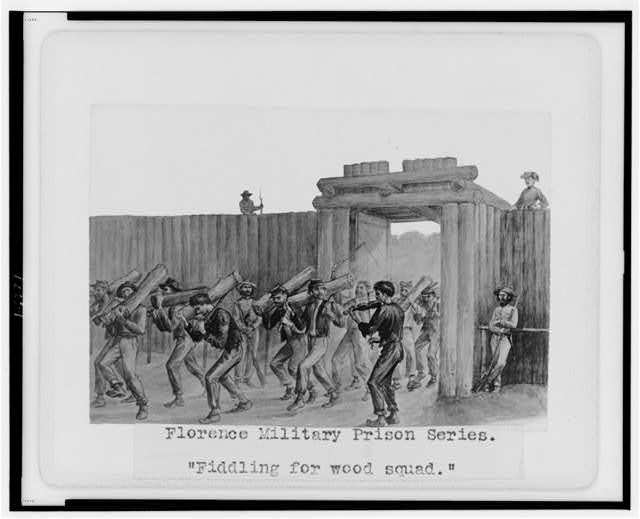 |
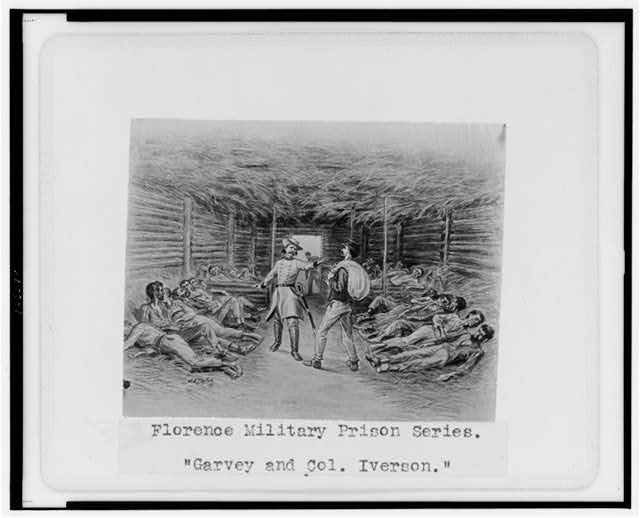 |
In 1861, Congress authorized the activities of a charitable organization known as the Sanitary Commission. They were unfunded and raised private funds to aid wounded soldiers. They ran kitchens and relief homes. Women, such as authoress, Louisa may Alcott were deeply involved. The organization was operated by Frederick Law Olmsted, architect of New York's, Central Park. Note that congress had still not appropriated money to support the fallen and wounded.
Civil War Facts Civil War Facts
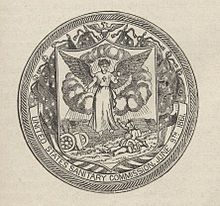 Civil War Facts |
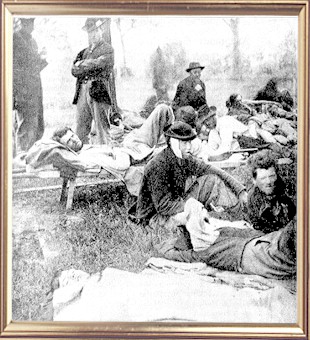 |
General McClellan recognized the transportation problem for wounded and dead. He issued his Order # 147 (1862) creating an ambulance corps for the Army of the Republic. Unfortunately, that order was limited in scope and few other Union Armies repeated its substance. However, Jonathan Letterman, a doctor in McClellan's army began a systematic organization of medical supplies and ambulances. He set an organizational standard that congress ultimately adopted.
The resources of the United States far exceeded that of the Confederacy. However, it became evident to President Lincoln that the cost of the war could not be borne without additional revenues. In response, the president signed into law The Revenue Act of 1862. This first progressive income tax, and an excise levy on tobacco and liquor, significantly aided the war effort. At the time, $10,000 would be equivalent in today's dollars to about $220,000. The Civil War was the progenitor of the Internal Revenue Service.
Civil War Facts
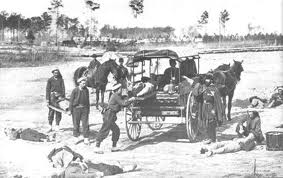
The Civil War Centennial Handbook Author: William H. Price
WAR DEPT., ADJT, GENERAL'S OFFICE,
Washington, March 16, 1864.
Civil War Facts
UNIFORM SYSTEM OF AMBULANCES.
The following act of Congress is published for the information and guidance of all concerned:
PUBLIC--No. 22.
AN ACT to establish a uniform system of ambulances in the armies of the United States.
Be it enacted by the Senate and House of Representatives of the United States of America in Congress assembled, That the medical director, or chief medical officer, of each army corps shall, under the control of the medical director of the army to which such army corps belongs, have the direction and supervision of all ambulances, medicine, and other wagons, horses, mules, harness, and other fixtures appertaining thereto, and of all officers and men who may be detailed or employed to assist him in the management thereof, in the army corps in which he may be serving.
By the end of the Civil War (April 26, 1865), over 100,000 bodies were unidentified. In private cemeteries, coffins lie open. Bones were collected and sold by the pound. Soon thereafter, a civilian push for national cemeteries had reached congress. In 1867, congress appropriated sums to establish a system of national cemeteries. That meant a recovery of bodies in five states. That led to the reburial of 300,000 men including the unidentified. Thirty thousand black soldiers were included and buried in segregated areas. The ranks of African Americans had been instrumental in identifying Union soldiers imprisoned in the notorious Confederate prison at Andersonville, Georgia (above). The process of burial and reburial was completed by 1871 aided by the new technologies of refrigeration and embalming.
Civil War Facts
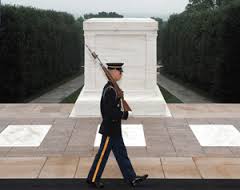
Some attention must be paid to Confederate soldiers. Northerners and their congress refused to appropriate any funds for identification and burial of the enemy. Hard feelings trumped rapprochement. However, the cause that motivated the north was also grasped by southern women. They raised funds to rebury their dead, exhume southern bodies from northern graves in Gettysburg, and created new cemeteries on southern land. They built the Hollywood cemetery for their soldiers near Richmond, Virginia, the capital of the Confederacy.
Civil War Facts Civil War Facts
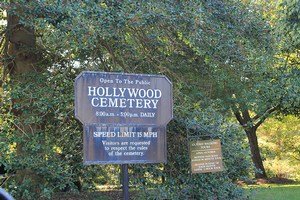 |
 |
General Ulysses Grant led the Union forces to victory. He was destined to again serve the nation as its 18th president, 1869-1877. He died of cancer in 1885. Instead of a final site for burial in the nation's capital, his wife chose the heights over the Hudson River, New York City (1897) and explained the choice, thusly:
“Riverside was selected by myself and my family as the burial place of my husband, General Grant. First, because I believed New York was his preference. Second, it is near the residence that I hope to occupy as long as I live, and where I will be able to visit his resting place often. Third, I have believed, and am now convinced, that the tomb will be visited by as many of his countrymen there as it would be at any other place. Fourth, the offer of a park in New York was the first which observed and unreservedly assented to the only condition imposed by General Grant himself, namely, that I should have a place by his side.”
Mrs. Grant lies by her husband's side.
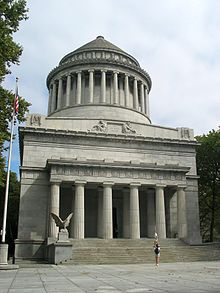
Destruction
Civil War Facts
The southern states instituted a war to insure slavery in perpetuity. Their agrarian prosperity was built on a system of bondage that eliminated labor costs and inflated profits. The lost war meant loss of economic wealth and political control over what was left of their society. Union General Sherman's southern campaign had wrecked their railroad system, invested southern harbors with northern traffic that transferred profits northward, and forced the breakup of the huge plantation system. During the years of war, the Confederate government had issued "due bills", for the supplies and cattle seized for use by its army. There was no government to repay the bills.
Civil War Facts

Civil War Facts
Inflation quickly struck the south. Credit was impossible and banks collapsed. Their society was forced to rely on barter. Their white labor force was reduced by the war by 30%. The farms that formed the backbone of the south were bereft of labor.
On the other hand, the war had meant the rapid growth of the northern economy. Their railroad system was intact and expanding. They had always held a commanding lead in regional industry. Even before the war, they outproduced the south in the production of cotton and wool. Their farms were more productive with introduction of new implements and machines that the south could not afford (and which was unnecessary when slavery existed). In short, the war had created an industrial giant on the world stage.
Civil War Facts
Some in the north had waged war against secession and others, single mindlessly, against slavery. For the former, their passion was preservation of the Union, and they derogatorily referred to the Confederate soldier as a "secesh". For the latter, the pure abolitionists, the fight to destroy slavery was their major, moral ideal and reason enough for war.
Abraham Lincoln did more than immortalize the sacrifice of the dead at Gettysburg (November 19, 1863). In the last paragraph of his address, he issued a challenge to the nation to complete the "unfinished work" to preserve the Union.
Four score and seven years ago our fathers brought forth on this continent, a new nation, conceived in Liberty, and dedicated to the proposition that all men are created equal.
Now we are engaged in a great civil war, testing whether that nation, or any nation so conceived and dedicated, can long endure. We are met on a great battle-field of that war. We have come to dedicate a portion of that field, as a final resting place for those who here gave their lives that that nation might live. It is altogether fitting and proper that we should do this.
But, in a larger sense, we can not dedicate -- we can not consecrate -- we can not hallow -- this ground. The brave men, living and dead, who struggled here, have consecrated it, far above our poor power to add or detract. The world will little note, nor long remember what we say here, but it can never forget what they did here. It is for us the living, rather, to be dedicated here to the unfinished work which they who fought here have thus far so nobly advanced. It is rather for us to be here dedicated to the great task remaining before us -- that from these honored dead we take increased devotion to that cause for which they gave the last full measure of devotion -- that we here highly resolve that these dead shall not have died in vain -- that this nation, under God, shall have a new birth of freedom -- and that government of the people, by the people. for the people, shall not perish from the earth.
That challenge was met and answered at the surrender at Appomattox Court House--
on April 9, 1865.
Civil War Facts
_______________________________________________________________________
References:
American Eras 1850-1877. Editor Thomas J. Brown. A. Manly, Inc. Book, NY,NY 1997.
American Military History. Editor John Whiteclay Chambers II, Oxford University Press, 1999.
Battles and Leaders of the Civil War, Selected and Edited by Ned Bradford, First Meridian Printing, New York, N.Y. 1989.
Encyclopedia of American Military History Vol1.Editor Spencer C. Tucker, Facts on File,Inc.NY NY 2003.
Encyclopedia of the Confederacy. editor Richard N. Current, Simon& Schuster NY 1993.
Hyperbear.com
National Archives
National Park Services
New York Times
Journal of the American Trust for Conservation. JAIC on line
www.wikipedia.org/
Sources:
Burns, Ken, Burns,Ric, Ward,Geoffrey C. Documentary film-The Civil War (1990)
Civil War Trust Fort Fisher
Castel, Albert. “The Fort Pillow Massacre: A Fresh Examination of the
Evidence,” Civil War History, vol. 4, no. 1 (1958)
Grant, Ulysses S. Personal Memoirs of Ulysses S. Grant, Mark Twain 1885?
Harper's Weekly 1861, 1863.
Haugen, David M. and Shein, Lori. The Civil War. Greenhaven Press, San Diego, California 1999.
Kahn, David (January 1980). General Grant National Memorial Historical Resource Study (PDF).
Katchen, Philip. The Civil War Day by Day. Zenith Press, St. Paul, Mn 2007.
Library of Congress. Civil War Reference Desk. Editor Margaret E. Wagner, Grand Central Press Book, Simon & Schuster. New York 2002
Rasmussen, William M.S.,Tilton, Robert S. Lee and Grant, Virginia Historical Society in association with D. Giles LTD. London
Shaara, Jeff. A Blaze of Glory. Ballantine Books, New York 2012.
Thomas. Emory M. Robert E. Lee: A Biography. W.W. Norton & Company. Inc. New York, NY 1995.
Volo,Dorothy Deneen & Volo, James M. Daily Life in Civil War America. Greenwood Press. Westport, Ct 1998.
Ward, Geoffrey C. with Ric Burns and Ken Burns. The Civil War An illustrated History. Alfred A Knopf Inc. New York 1990.
American Wars | What Caused the Civil War | Civil War Facts